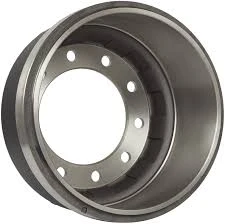
-
 Afrikaans
Afrikaans -
 Albanian
Albanian -
 Amharic
Amharic -
 Arabic
Arabic -
 Armenian
Armenian -
 Azerbaijani
Azerbaijani -
 Basque
Basque -
 Belarusian
Belarusian -
 Bengali
Bengali -
 Bosnian
Bosnian -
 Bulgarian
Bulgarian -
 Catalan
Catalan -
 Cebuano
Cebuano -
 Corsican
Corsican -
 Croatian
Croatian -
 Czech
Czech -
 Danish
Danish -
 Dutch
Dutch -
 English
English -
 Esperanto
Esperanto -
 Estonian
Estonian -
 Finnish
Finnish -
 French
French -
 Frisian
Frisian -
 Galician
Galician -
 Georgian
Georgian -
 German
German -
 Greek
Greek -
 Gujarati
Gujarati -
 Haitian Creole
Haitian Creole -
 hausa
hausa -
 hawaiian
hawaiian -
 Hebrew
Hebrew -
 Hindi
Hindi -
 Miao
Miao -
 Hungarian
Hungarian -
 Icelandic
Icelandic -
 igbo
igbo -
 Indonesian
Indonesian -
 irish
irish -
 Italian
Italian -
 Japanese
Japanese -
 Javanese
Javanese -
 Kannada
Kannada -
 kazakh
kazakh -
 Khmer
Khmer -
 Rwandese
Rwandese -
 Korean
Korean -
 Kurdish
Kurdish -
 Kyrgyz
Kyrgyz -
 Lao
Lao -
 Latin
Latin -
 Latvian
Latvian -
 Lithuanian
Lithuanian -
 Luxembourgish
Luxembourgish -
 Macedonian
Macedonian -
 Malgashi
Malgashi -
 Malay
Malay -
 Malayalam
Malayalam -
 Maltese
Maltese -
 Maori
Maori -
 Marathi
Marathi -
 Mongolian
Mongolian -
 Myanmar
Myanmar -
 Nepali
Nepali -
 Norwegian
Norwegian -
 Norwegian
Norwegian -
 Occitan
Occitan -
 Pashto
Pashto -
 Persian
Persian -
 Polish
Polish -
 Portuguese
Portuguese -
 Punjabi
Punjabi -
 Romanian
Romanian -
 Russian
Russian -
 Samoan
Samoan -
 Scottish Gaelic
Scottish Gaelic -
 Serbian
Serbian -
 Sesotho
Sesotho -
 Shona
Shona -
 Sindhi
Sindhi -
 Sinhala
Sinhala -
 Slovak
Slovak -
 Slovenian
Slovenian -
 Somali
Somali -
 Spanish
Spanish -
 Sundanese
Sundanese -
 Swahili
Swahili -
 Swedish
Swedish -
 Tagalog
Tagalog -
 Tajik
Tajik -
 Tamil
Tamil -
 Tatar
Tatar -
 Telugu
Telugu -
 Thai
Thai -
 Turkish
Turkish -
 Turkmen
Turkmen -
 Ukrainian
Ukrainian -
 Urdu
Urdu -
 Uighur
Uighur -
 Uzbek
Uzbek -
 Vietnamese
Vietnamese -
 Welsh
Welsh -
 Bantu
Bantu -
 Yiddish
Yiddish -
 Yoruba
Yoruba -
 Zulu
Zulu
Replacing Drum Brakes with Disc Brakes | Ultimate Guide for Vehicle Upgrades
Replacing Drum Brakes with Disc Brakes An Upgrade for Modern Vehicles
When it comes to vehicle performance, particularly in stopping power, the choice between drum brakes and disc brakes is pivotal. While drum brakes have been a staple in automotive engineering for decades, many enthusiasts and mechanics are considering the benefits of upgrading to disc brakes. This article explores the reasons behind replacing drum brakes with disc brakes and the advantages that come with this transition.
Firstly, it's essential to understand the fundamental differences between drum and disc brakes. Drum brakes consist of a set of shoes that press against the inner surface of a cylindrical drum, creating friction to slow down the vehicle. Conversely, disc brakes utilize a flat rotor with brake calipers that squeeze the pads against the rotor's surface to achieve stopping power. This difference in design leads to substantial variations in performance.
Replacing Drum Brakes with Disc Brakes An Upgrade for Modern Vehicles
In terms of maintenance, disc brakes also present clear advantages. They are generally easier to inspect and replace, often requiring less labor than drum brake systems. This ease of access allows for quicker diagnostics and repairs. Furthermore, disc brakes tend to have longer service intervals due to reduced wear, leading to cost savings over time.
replacing drum brakes to disc

Another significant benefit of disc brakes is their improved performance in wet conditions. Drum brakes are susceptible to water accumulation, which can diminish braking effectiveness. In contrast, disc brakes are less affected by moisture, maintaining better performance in rain or snow. This characteristic enhances vehicle safety and provides drivers with more confidence in various driving conditions.
In terms of aesthetics, disc brakes also offer a modern look that many car enthusiasts appreciate. Visible disc brakes can improve the overall appearance of a vehicle, especially when paired with stylish wheels. This visual appeal is an added bonus for those looking to customize their vehicles while upgrading performance.
However, transitioning from drum brakes to disc brakes does require consideration. The process can involve a significant investment in parts and labor, especially for those modifying older vehicles. It's also important to ensure that other components, such as the master cylinder and brake lines, are compatible with the new brake system.
In conclusion, replacing drum brakes with disc brakes represents a substantial upgrade in performance, safety, and maintenance. The improved heat dissipation, maintenance ease, performance in wet conditions, and aesthetic appeal make disc brakes an attractive choice for modern vehicles. For anyone considering an upgrade, this transition can greatly enhance the overall driving experience and vehicle safety.
-
What Are Drum BrakesNewsJul.07,2025
-
Understanding Brake Drum MaterialNewsJul.07,2025
-
Semi-Trailer Brake Drum: A Key Component for Extreme Loads and Long-Distance TransportNewsJul.07,2025
-
Drum Brake Pads for SaleNewsJul.07,2025
-
Brake Drums for SaleNewsJul.07,2025
-
Brake Drum ManufacturerNewsJul.07,2025
-
Aluminum Brake Drums: The Future of High-Performance CarsNewsJul.07,2025
